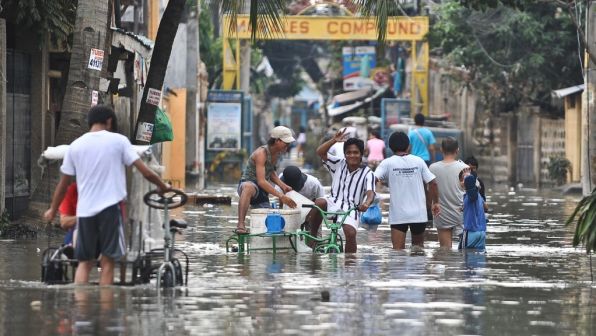Unabated climate change would bring devastating consequences to countries in Asia and the Pacific, which could severely affect their future growth, reverse current development gains, and degrade quality of life, according to a report produced by the Asian Development Bank (ADB) and the Potsdam Institute for Climate Impact Research (PIK).
Currently a 6 degree Celsius temperature increase is projected over the Asian landmass by the end of the century. Some countries in the region could experience significantly hotter climates, with temperature increases in Tajikistan, Afghanistan, Pakistan, and the northwest of China projected to reach 8 degree Celsius, according to the report, A Region at Risk: The Human Dimensions of Climate Change in Asia and the Pacific.
“Home to two-thirds of the world’s poor and regarded as one of the most vulnerable regions to climate change, countries in Asia and the Pacific are at the highest risk of plummeting into deeper poverty, and disaster, if mitigation and adaptation efforts are not quickly and strongly implemented,” said Bambang Susantono, ADB Vice-President for Knowledge Management and Sustainable Development.
The increases in temperature would lead to drastic changes in the region’s weather system, agriculture and fisheries sectors, land and marine biodiversity, domestic and regional security, trade, urban development, migration, and health. Such a scenario may even pose an existential threat to some countries in the region and crush any hope of achieving sustainable and inclusive development.
Coastal and low-lying areas in the region will be at an increased risk of flooding. Nineteen of the 25 cities most exposed to a one-meter sea-level rise are located in the region, 7 of which are in the Philippines alone. Indonesia, however, will be the most affected country in the region by coastal flooding with approximately 5.9 million people expected to be affected every year until 2100.
“The challenge is twofold,” said Professor Hans Joachim Schellnhuber, PIK Director. “On the one hand, Asian greenhouse-gas emissions have to be reduced in a way that the global community can limit planetary warming to well below 2 degrees Celsius, as agreed in Paris 2015. On the other hand, Asian countries have to find strategies for ensuring prosperity and security under unavoidable climate change within a healthy global development.”
Increased vulnerability to flooding and other disasters will significantly impact the region economically. Global flood losses are expected to increase to US$52 billion per year by 2050 from US$6 billion in 2005. Moreover, 13 of the top 20 cities with the largest growth of annual flood losses from 2005-2050 are in Asia and the Pacific.








